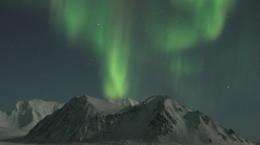Man-made aurora to help predict space weather

(PhysOrg.com) -- For more than 25 years, our understanding of terrestrial space weather has been partly based on incorrect assumptions about how nitrogen, the most abundant gas in our atmosphere, reacts when it collides with electrons produced by energetic ultraviolet sunlight and "solar wind."
New research published today, Tuesday 8 June, in IOP's Journal of Physics B: Atomic, Molecular and Optical Physics describes how scientists from NASA's Jet Propulsion Laboratory (JPL) at the California Institute of Technology have fired electrons of differing energies through a cloud of nitrogen gas to measure the ultraviolet light emitted by this collision.
The researchers have found that well-trusted measurements published in a 1985 journal paper by researchers Ajello and Shemansky contain a significant experimental error, putting decades of space weather findings dependent on this work on unstable ground.
The difference between these contemporary findings and the 1985 researchers' work stems from the 2010 team's improved ability to create and control the collisions and avoid the analytical pitfalls that plagued the 1985 findings.
The new results from the team at JPL suggest that the intensity of a broad band of ultraviolet light emitted from the collision changes significantly less with bombarding electron energies than previously thought.
As the ultraviolet light within the so called 'Lyman-Birge-Hopfield' (LBH) band is used by the likes of NASA and the European Space Agency to better understand the physical and chemical processes occurring in our upper atmosphere and in near-Earth space, the results will give some immediate cause to reflect.
With near-Earth space playing host to our ever-growing satellite communication systems, the new more accurate measurements might unleash a greater understanding of space weather and help us better protect our space-based assets.
The findings will also help further our understanding of phenomena like Aurora Borealis (the Northern Lights) and similarly the Aurora Australis (Southern Lights), which are caused by collisional processes involving solar wind particles exciting terrestrial oxygen and nitrogen particles at the North and South Pole.
The researchers are hopeful that their findings will also assist the Cassini project understand happenings on Saturn's largest moon, Titan, as LBH emissions have been detected by the orbiting robotic spacecraft.
Author Dr Charles Patrick Malone from JPL said, "Our measurement of LBH energy-dependence differs significantly from widely accepted results published 25 years ago. Aeronomers can now turn the experiment around and apply it to atmospheric studies and determine what kind of collisions produce the observed light."
More information: Journal paper: iopscience.iop.org/0953-4075/43/13/135201
Provided by Institute of Physics

















